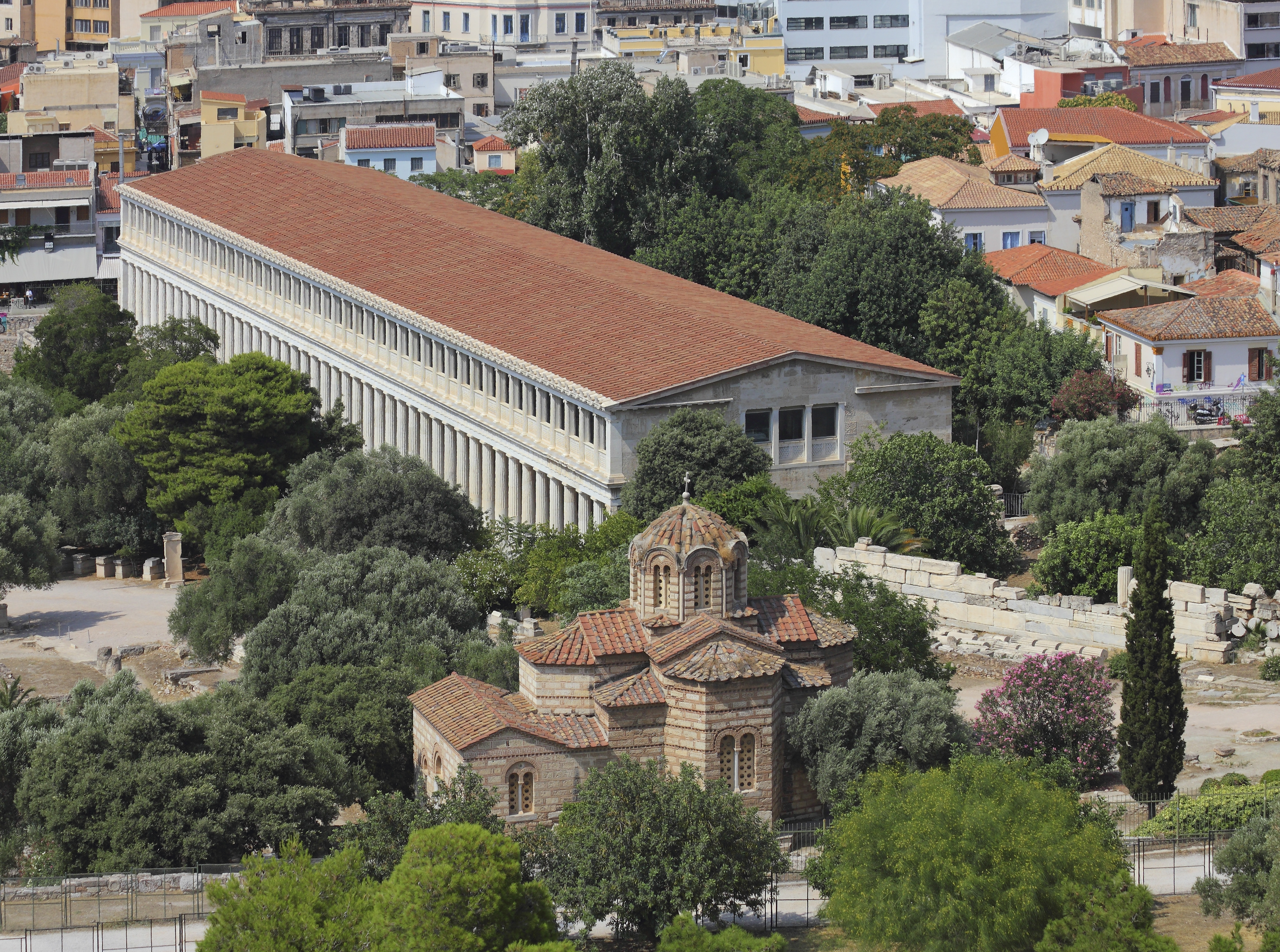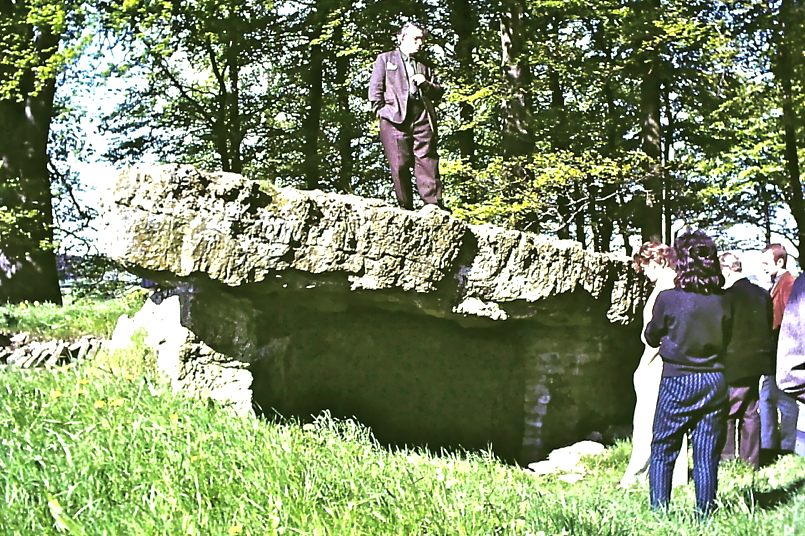|
William Taylour
Lord William Desmond Taylor (3 January 1904 – 2 December 1989) was a British archaeologist, specialising in Mycenaean Greece. Biography William Desmond Taylour was the second son of Geoffrey Taylour, 4th Marquess of Headfort, and the Irish Gaiety Girl Rosie Boote. He was born on January 3, 1904, at Pennington House (Lymington, Hampshire), where his parents lived after their scandalous wedding, but was raised in the family estate Headfort House, in Meath County, Ireland. He attended Harrow School and, after a short spell in the diplomatic service, began a career in finance, first on Wall Street and then in London. During the World War II, Taylour fought in North Africa among the 2nd Derbyshire Yeomanry, where he gained the rank of captain. After the war, he joined the Allied Control Commission in Germany until 1947, when he enrolled at Trinity College, Cambridge. A keen archaeologist since his time at Harrow, he devoted himself to the study of Mycenaean pottery, the subjec ... [...More Info...] [...Related Items...] OR: [Wikipedia] [Google] [Baidu] |
Harrow School
(The Faithful Dispensation of the Gifts of God) , established = (Royal Charter) , closed = , type = Public schoolIndependent schoolBoarding school , religion = Church of England , president = , head_label = Head Master , head = Alastair Land , r_head_label = , r_head = , chair_label = Chairman of the Governors , chair = J P Batting , founder = John Lyon of Preston , specialist = , address = 5 High Street, Harrow on the Hill , city = London Borough of Harrow , county = London , country = England , postcode = HA1 3HP , local_authority = , urn = 102245 , ofsted = , staff = ~200 (full-time) , e ... [...More Info...] [...Related Items...] OR: [Wikipedia] [Google] [Baidu] |
Derbyshire Yeomanry
The Derbyshire Yeomanry was a yeomanry regiment of the British Army, first raised in 1794, which served as a cavalry regiment and dismounted infantry regiment in the First World War and provided two reconnaissance regiments in the Second World War, before being amalgamated with the Leicestershire Yeomanry to form the Leicestershire and Derbyshire (Prince Albert's Own) Yeomanry in 1957. History Formation and early history The regiment was first formed as the Derbyshire Corps of Fencible Cavalry in 1794, as a regiment of full-time fencible soldiers for home defence. The regiment changed shortly thereafter to the Derbyshire Corps of Yeomanry Cavalry, a part-time yeomanry regiment, and was dispersed in individual troops. In 1834, the troops were regimented as the Derbyshire Yeomanry Cavalry, who sponsored the 8th and 104th (Derbyshire) Companies of the Imperial Yeomanry in 1900, for service in the South African War, and in 1901 was itself reorganized as mounted infantry as the Der ... [...More Info...] [...Related Items...] OR: [Wikipedia] [Google] [Baidu] |
Laconia
Laconia or Lakonia ( el, Λακωνία, , ) is a historical and administrative region of Greece located on the southeastern part of the Peloponnese peninsula. Its administrative capital is Sparta. The word ''laconic''—to speak in a blunt, concise way—is derived from the name of this region, a reference to the ancient Spartans who were renowned for their verbal austerity and blunt, often pithy remarks. Geography Laconia is bordered by Messenia to the west and Arcadia to the north and is surrounded by the Myrtoan Sea to the east and by the Laconian Gulf and the Mediterranean Sea to the south. It encompasses Cape Malea and Cape Tainaron and a large part of the Mani Peninsula. The Mani Peninsula is in the west region of Laconia. The islands of Kythira and Antikythera lie to the south, but they administratively belong to the Attica regional unit of islands. The island, Elafonisos, situated between the Laconian mainland and Kythira, is part of Laconia. The Eurotas is the lon ... [...More Info...] [...Related Items...] OR: [Wikipedia] [Google] [Baidu] |
Mycenaean Civilisation
Mycenaean Greece (or the Mycenaean civilization) was the last phase of the Bronze Age in Ancient Greece, spanning the period from approximately 1750 to 1050 BC.. It represents the first advanced and distinctively Greek civilization in mainland Greece with its palatial states, urban organization, works of art, and writing system.Lazaridis, Iosif et al.Genetic origins of the Minoans and Mycenaeans. ''Nature'', 2017Supplementary Information "The Mycenaeans", pp. 2–3).. The Mycenaeans were mainland Greek peoples who were likely stimulated by their contact with insular Minoan Crete and other Mediterranean cultures to develop a more sophisticated sociopolitical culture of their own. The most prominent site was Mycenae, after which the culture of this era is named. Other centers of power that emerged included Pylos, Tiryns, Midea in the Peloponnese, Orchomenos, Thebes, Athens in Central Greece and Iolcos in Thessaly. Mycenaean settlements also appeared in Epirus, Macedonia, on isl ... [...More Info...] [...Related Items...] OR: [Wikipedia] [Google] [Baidu] |
Archaeological Society Of Athens
The Archaeological Society of Athens (Greek: Εν Αθήναις Αρχαιολογική Εταιρεία) is an independent learned society. Also termed the Greek Archaeological Society, it was founded in 1837 by Konstantinos Bellios, just a few years after the establishment of the modern Greek State, with the aim of encouraging archaeological excavations, maintenance, care and exhibition of antiquities in Greece. The Archaeological Society of Athens work in excavation and funding of archaeological endeavours are extensive. For example, the society helped discover new epigraphical evidence associated with the sanctuary of the goddess Demeter within Eleusis. In addition to this, they provided plans of the prehistoric settlement of Thorikos to help uncover ancient ceramic material. History The Archaeological Society of Athens is an independent archaeological organisation of scholars, historians, and academics founded in 1837. It was built to relocate, restore, and re-erecting ... [...More Info...] [...Related Items...] OR: [Wikipedia] [Google] [Baidu] |
George E
George may refer to: People * George (given name) * George (surname) * George (singer), American-Canadian singer George Nozuka, known by the mononym George * George Washington, First President of the United States * George W. Bush, 43rd President of the United States * George H. W. Bush, 41st President of the United States * George V, King of Great Britain, Ireland, the British Dominions and Emperor of India from 1910-1936 * George VI, King of Great Britain, Ireland, the British Dominions and Emperor of India from 1936-1952 * Prince George of Wales * George Papagheorghe also known as Jorge / GEØRGE * George, stage name of Giorgio Moroder * George Harrison, an English musician and singer-songwriter Places South Africa * George, Western Cape ** George Airport United States * George, Iowa * George, Missouri * George, Washington * George County, Mississippi * George Air Force Base, a former U.S. Air Force base located in California Characters * George (Peppa Pig), a 2-year-ol ... [...More Info...] [...Related Items...] OR: [Wikipedia] [Google] [Baidu] |
Carl Blegen
Carl William Blegen (January 27, 1887 – August 24, 1971) was an American archaeologist who worked at the site of Pylos in Greece and Troy in modern-day Turkey. He directed the University of Cincinnati excavations of the mound of Hisarlik, the site of Troy, from 1932 to 1938. Background Blegen was born in Minneapolis, Minnesota, the eldest of six children born to Anna Regine (1854–1925) and John H. Blegen (1851–1928), both of whom had emigrated from Lillehammer, Norway. His younger brother was noted historian Theodore C. Blegen. His father was a professor at Augsburg College in Minneapolis for more than 30 years and played a major role in the Norwegian Lutheran Church in America. Blegen earned his bachelor's degree from the University of Minnesota in 1904 and started graduate studies at Yale University in 1907. Career In Greece, he was a fellow at the American School of Classical Studies at Athens (1911–1913), during which time he worked on excavations at Locris, Cor ... [...More Info...] [...Related Items...] OR: [Wikipedia] [Google] [Baidu] |
Palace Of Nestor
The Palace of Nestor (Modern Greek: Ανάκτορο του Νέστορα) was an important centre in Mycenaean times, and described in Homer's ''Odyssey'' and ''Iliad'' as Nestor's kingdom of "sandy Pylos". The palace featured in the story of the Trojan War, as Homer tells us that Telemachus: went to Pylos and to Nestor, the shepherd of the people, and he received me in his lofty house and gave me kindly welcome, as a father might his own son who after a long time had newly come from afar: even so kindly he tended me with his glorious sons. The site is the best preserved Mycenaean Greek palace discovered. The palace is the primary structure within a larger Late Helladic era settlement, once probably surrounded by a fortified wall. The palace was a two-storey building with store rooms, workshops, baths, light wells, reception rooms and a sewage system. The settlement had been long occupied with most artifacts discovered dating from 1300 BC. The palace complex was destroyed b ... [...More Info...] [...Related Items...] OR: [Wikipedia] [Google] [Baidu] |
Alan Wace
Alan John Bayard Wace (13 July 1879 – 9 November 1957) was an English archaeologist. Biography Wace was educated at Shrewsbury School and Pembroke College, Cambridge. He was director of the British School at Athens (1914–1923), Deputy Keeper in the Department of Textiles in the Victoria and Albert Museum (1924–1934), the second Laurence Professor of Classical Archaeology at University of Cambridge (1934–1944) and professor at the Farouk I University in Egypt (1943–1952). Among Wace's field projects were those at Sparta, Mycenae, Troy, Thessaly, Corinth, and Alexandria. Along with Carl Blegen, Wace carried out important work on the decipherment of Linear B tablets. Elizabeth (Lisa) Bayard French, was Wace's daughter. Works *''Prehistoric Thessaly'' (1912). *''The nomads of the Balkans : an account of life and customs among the Vlachs of northern Pindus''(1913). *''Excavations at Mycenae'' (1923). *''Chamber tombs at Mycenae'' (1932). *''The Sarcophagus of Alexander ... [...More Info...] [...Related Items...] OR: [Wikipedia] [Google] [Baidu] |
American School Of Classical Studies At Athens
, native_name_lang = Greek , image = American School of Classical Studies at Athens.jpg , image_size = , image_alt = , caption = The ASCSA main building as seen from Mount Lykavittos , latin_name = , other_name = , former_name = , motto = , motto_lang = , mottoeng = , established = 1881 , closed = , type = Overseas Research Center / Higher Education , parent = , affiliation = , religious_affiliation = , academic_affiliation = , endowment = , budget = , officer_in_charge = , chairman = , chairperson = , chancellor = , president = , vice-president = , superintendent = , provost = , vice_chancellor = , rector = , principal = , dean = , director = , head_label = , head = , academic_staff = , administrative_staff = , students = , undergrad = , postgrad = , doctoral = , other = , city = Athens , state = , province = , country = Greece , coor = , campus = urban , language = , free_label = , fr ... [...More Info...] [...Related Items...] OR: [Wikipedia] [Google] [Baidu] |
Glyn Daniel
Glyn Edmund Daniel Fellow of the British Academy, FBA, Royal Anthropological Institute of Great Britain and Ireland, FRAI (23 April 1914 – 13 December 1986) was a Wales, Welsh scientist and archaeologist who taught at Cambridge University, where he specialised in the European Neolithic period. He was appointed Disney Professor of Archaeology in 1974 and edited the academic journal ''Antiquity (journal), Antiquity'' from 1958 to 1985. In addition to early efforts to popularise archaeological study and antiquity on radio and television, he edited several popular studies of the fields. He also published mysteries under the pseudonym Dilwyn Rees. Early life and education Daniel was born in Lampeter Velfrey, Pembrokeshire, a small village between Narberth, Pembrokeshire, Narberth and Whitland in south-west Wales, as an only child. His father, John Daniel, was the village schoolmaster there. When Glyn Daniel was five he moved with his parents to Llantwit Major in the Vale of Glam ... [...More Info...] [...Related Items...] OR: [Wikipedia] [Google] [Baidu] |

.jpg)



